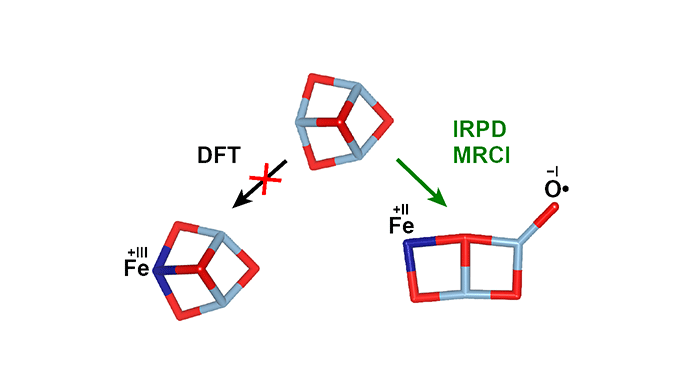We provide spectroscopic and computational evidence for a substantial change in structure and gas phase reactivity of Al3O4+ upon Fe-substitution, which is correctly predicted by multireference (MR) wave function calculations. Al3O4+ exhibits a cone-like structure with a central trivalent O atom (C3v symmetry). The replacement of the Al- by an Fe atom leads to a planar bicyclic frame with a terminal Al−O•− radical site, accompanied by a change from the Fe+III/O−II to the Fe+II/O−I valence state. The gas phase vibrational spectrum of Al2FeO4+ is exclusively reproduced by the latter structure, which MR wave function calculations correctly identify as the most stable isomer. This isomer of Al2FeO4+ is predicted to be highly reactive with respect to C−H bond activation, very similar to Al8O12+ which also features the terminal Al−O•− radical site. Density functional theory, in contrast, predicts a less reactive Al3O4+-like “isomorphous substitution” structure of Al2FeO4+ to be the most stable one, except for functionals with very high admixture of Fock exchange (50%, BHLYP).
Valence and Structure Isomerism of Al2FeO4+: Synergy of Spectroscopy and Quantum Chemistry
F. Müller, J.B. Stückrath, F.A. Bischoff, L. Gagliardi, J. Sauer, S. Debnath, M. Jorewitz, K.R. Asmis
J. Am. Chem. Soc. 42, 18050–9 (2020)
